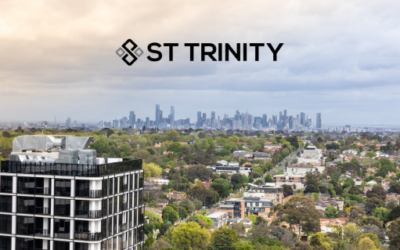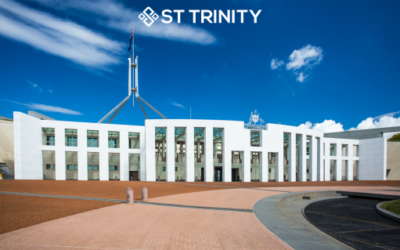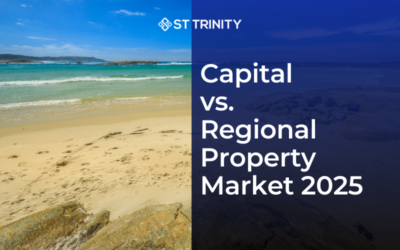In recent years, it is evident that Sydney’s property market has witnessed an unprecedented surge in prices, making it increasingly challenging for both homebuyers and investors to enter the market.
For context, there has been a $162,302 annual change in Sydney House prices from March 2023 – March 2024. Further to this, Sydney’s median house price is at a record high of $1,627,625, while in Brisbane, the median is $924,498 demonstrating a $703,127 difference.
As the cost of living continues to climb and housing affordability becomes a pressing issue, many are turning their sights northward and moving from Sydney to Brisbane, where a more balanced market and attractive lifestyle await.
Brisbane had one of the largest net internal migration rates of 15,300 people in 2022-2023, a trend that is predicted to prosper further, indicating a robust influx of new residents drawn by the city’s economic opportunities and lifestyle advantages.
In this article, we delve into the factors driving this migration trend, exploring why more and more people are choosing to leave Sydney behind in favour of Brisbane’s promising prospects.
Table of Contents
1. Sydney’s Property Market Surge
Sydney’s property market has witnessed a remarkable surge, driven by a combination of factors that have propelled housing prices to unprecedented heights.
As of the latest data, house prices in Sydney have increased by 9.6% over the past year alone, with the median house price now standing at $1.6 million.
This surge has been fueled by strong demand from both local buyers and investors, encouraged by historically low interest rates and an influx of buyers seeking safe-haven assets amid economic uncertainties.
As Sydney’s property market continues to thrive, analysts predict ongoing growth at a moderate pace, underscoring the city’s resilience and attractiveness in the Australian real estate landscape.
2. Challenges of Sydney’s Market
The surge in Sydney’s property market has not been without its challenges, particularly evident in the affordability and accessibility issues plaguing the city’s western suburbs.
Despite the overall price boom, greater Western suburbs like Blacktown have faced significant housing affordability pressures, with an increase of 11.9% in housing costs (Realestate.com.au). Considering this, many residents are finding it increasingly difficult to enter the property market even an hour out of Sydney CBD.
The disparity in property values between the eastern and western suburbs has widened, exacerbating social and economic inequalities within the city.
This trend underscores the need for balanced urban planning and policy interventions to ensure equitable growth across all regions of Sydney, fostering a sustainable and inclusive housing market for all residents.
3. Brisbane: A Rising Star
Brisbane emerges as an expanding real estate destination, steadily earning its reputation as a rising star in Australia’s property market. The city’s property market has shown resilience and growth, driven by factors such as increasing population growth, infrastructure development, and affordability relative to other major Australian cities.
According to data from the Australian Bureau of Statistics, from 2022 – 2023 Greater Brisbane increased by 81,200 people (3.1%). Such population growth is a crucial factor in driving demand for housing and bolstering the city’s property market.
As Brisbane continues to attract new residents, the demand for housing is expected to remain strong, contributing to ongoing property market stability and potential price appreciation in key areas.
Pallara – Willawong in Brisbane’s south had a 14% increase in population growth from 2022 – 2023, and it’s not the only suburb with a large amount of growth. Dr Nicola Powell , Domain Chief of Research and Economics claims property in regional Australia has always captivated buyers, especially for those seeking affordability and an escape from metropolitan areas.
4. Comparing Affordability: Sydney vs Brisbane
Comparing affordability between the two flourishing cities reveals stark differences favouring Brisbane. Considering previously mentioned data ,as of 2024, the median house price in Sydney is the most expensive in the country.
In contrast, Brisbane maintains a more accessible market with a much lower median house price. This disparity underscores Brisbane’s appeal as a more affordable option for homebuyers and investors, offering significant savings compared to Sydney’s heated property market.
The affordability gap is further reflected in rental costs, where Sydney’s average weekly rent stands at $745 house and unit combined, compared to Brisbane’s averages of $663 house and unit combined.
Such affordability metrics highlight Brisbane’s competitive edge, attracting residents seeking a high quality of life without the financial strain associated with Sydney’s housing market.
5. Lifestyle and Amenities: Sydney vs Brisbane
When comparing lifestyle and amenities between Sydney and Brisbane, both cities offer distinct advantages tailored to different preferences.
Sydney, Australia’s largest city, boasts a vibrant cosmopolitan lifestyle with iconic landmarks like the Sydney Opera House and Bondi Beach. Residents here enjoy a bustling urban atmosphere enriched by a diverse culinary scene, world-class shopping districts, and a robust arts and cultural calendar.
In contrast, Brisbane, known for its laid-back and relaxed vibe, appeals to those seeking a more balanced lifestyle amidst subtropical surroundings. The city’s outdoor lifestyle is complemented by its proximity to pristine beaches, lush parklands like the South Bank Parklands, and a burgeoning food scene.
Overall, whether one prefers the dynamic pace of Sydney or the relaxed charm of Brisbane, both cities offer a rich tapestry of lifestyle benefits and amenities to cater to diverse tastes and interests.
6. Brisbane’s Investment Potential
Brisbane’s evolving market presents compelling investment opportunities bolstered by promising future growth prospects and a favourable economic forecast. As one of Australia’s fastest-growing cities, Brisbane benefits from ongoing infrastructure developments, such as Cross River Rail and Brisbane Metro, enhancing connectivity and supporting urban expansion.
The city’s affordability relative to Sydney and Melbourne attracts both local and international investors seeking value and potential returns. Projections indicate continued population growth and increased demand for housing, driving property values upward.
Additionally, initiatives promoting sustainable development and innovation further enhance Brisbane’s appeal as a forward-looking investment destination poised for long-term capital appreciation. Investors keen on tapping into Australia’s booming property market are increasingly eyeing Brisbane for its robust investment potential and strategic positioning in the Asia-Pacific region.
7. Real Estate Trends: Sydney vs Brisbane
Currently, Sydney and Brisbane are experiencing distinct real estate trends shaped by unique market dynamics.
In Sydney, despite recent cooling measures, the market remains buoyant with a focus on premium properties and desirable suburbs. As of mid-2024, research claims Sydney’s median house price sits around a record high of $1.6 million, having risen modestly due to sustained demand in well-established neighbourhoods and limited supply.
Conversely, Brisbane’s property market has seen more robust growth for its market history, fuelled by affordability and increased interstate migration. From 2022 to 2023, Brisbane recorded a net internal migration of 15,300 people, reflecting a growing preference for the city’s lifestyle and lower cost of living. The median house price in Brisbane has risen steadily, reaching just over $900,000, driven by strong local demand and infrastructure investment.
Looking ahead, forecasts suggest Sydney’s market may stabilise with moderate price growth, supported by ongoing population influx and economic recovery. In contrast, Brisbane is poised to see continued price appreciation as infrastructure projects like the Brisbane Metro and Cross River Rail stimulate economic activity and urban development.
Overall, both cities offer diverse opportunities for investors and homebuyers, each with its unique set of factors influencing market trends and future prospects.
8. Conclusion
In conclusion, Sydney’s property market continues to command attention with its unprecedented surge in prices, presenting both challenges and opportunities for prospective buyers and investors alike.
As housing affordability becomes increasingly elusive in Sydney, many are turning their gaze towards Brisbane, where a more balanced market and a compelling lifestyle beckon. With Brisbane’s affordability, robust population growth, and strategic infrastructure investments, the city is poised to sustain its upward trajectory in the property market.
Whether driven by financial prudence, lifestyle preferences, or investment prospects, the shift of moving from Sydney to Brisbane underscores a broader trend towards seeking value and quality of life beyond the confines of Australia’s most expensive housing market. As both cities evolve, navigating these distinct real estate landscapes will require informed decision-making to capitalise on the unique opportunities each has to offer.
9. Frequently Asked Questions (FAQ)
Q: How sustainable is the current surge in Sydney’s property prices, and what factors might influence its future stability?
A: The sustainability of Sydney’s property price surge depends on several factors including economic conditions, supply and demand dynamics, government policies, and other external factors such as migration patterns and geopolitical stability. Monitoring these variables and their impacts will provide better insights into whether the surge can be maintained in the long term.
Q: What are the key infrastructure projects driving Brisbane’s growth, and how might these impact property values in the coming years?
A: The key infrastructure projects in Brisbane include the Cross River Rail, Brisbane Metro, road and highway upgrades and airport and port expansions. These projects are expected to increase demand for properties located near new transport nodes, stimulate urban development and revitalisation in surrounding areas and boost property values in suburbs benefiting from improved infrastructure.
Q: What are the typical costs associated with relocating from Sydney to Brisbane, and how do these compare with the potential savings in housing costs?
A: The typical costs associated with relocating from Sydney to Brisbane include moving expenses, travelling costs and settlement costs. Potential savings in housing costs include lower median house prices and savings on stamp duty rates. While relocation costs can vary widely depending on individual circumstances, potential housing savings in Brisbane may offset some relocation expenses over time.
Q: What are the predictions for future property price trends in both Sydney and Brisbane, and how might these impact decision-making for buyers and investors?
A: Sydney Property is predicted to continue with moderate growth due to sustained demand in premium suburbs and limited supply. Brisbane Property, driven by population growth, infrastructure projects and affordability is likely to appreciate in value. Buyers and investors in Sydney may consider factors like affordability, potential for capital growth, and lifestyle. Brisbane’s attractiveness may grow due to lower entry costs and expected price appreciation, influencing investment decisions.




